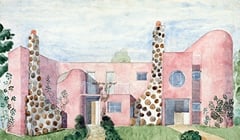THE ERA OF MANKIND:
BE A TREE AND YOU WILL SEE
ILLUSTRATION: JESPER WALDERSTEN

SINCE THE BEGINNING OF THE 1800'S, the world’s population has increased from one billion to seven billion. During the same period, and particularly after the end of World War II, factors such as economic development, technological inventions, new medicines and international cooperation have helped raise the standard of living and improve the health of an increasing proportion of people. Despite this, several billion people still live in poverty and the world's forests, lakes, seas and other ecosystems have begun to show signs of serious damage.
IN 2005, the Beijer Institute contributed through its research to saw the publication of the first health check on the world’s ecosystems, the UN Millennium Ecosystem Assessment, to which the Beijer Institute contributed through its research. The diagnosis was clear: mankind’s rapidly increasing need for food, clean water, timber, fibres and fuel has altered the earth’s ecosystems more rapidly and more severely in the past 70 years than at any previous time.
THE UN REPORT also brought some good news. It helped confirm that humans and human societies are inseparable parts of the biosphere – the global ecological system that includes all life on earth and in the atmosphere. The report also emphasised the importance of calculating the value of nature’s goods and services. The conclusion was that combatting poverty and economic development are dependent on good management of ecosystems and their ability to provide us with essential services..












































































